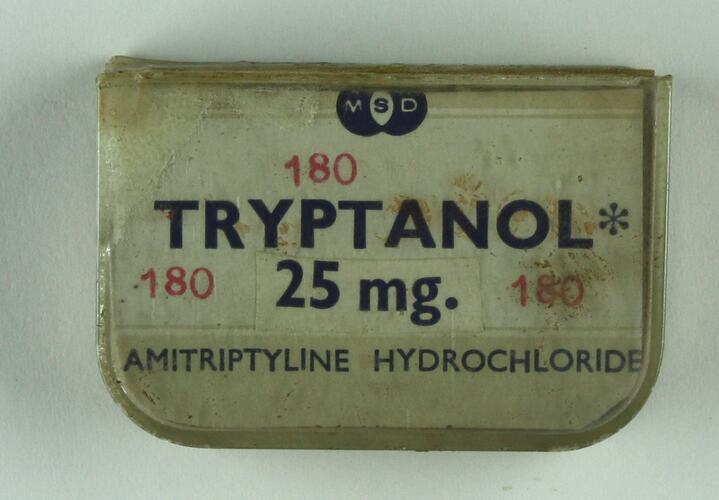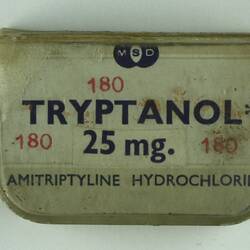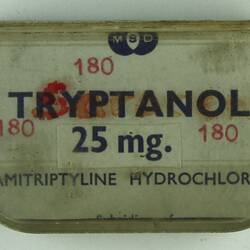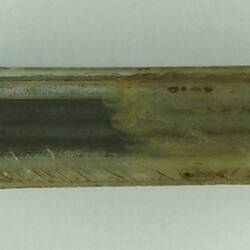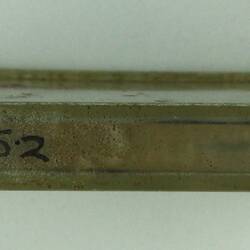Summary
Tryptanol is the trade name for the tricyclic antidepressant (TCA) amitriptyline hydrochloride. TCAs correct the imbalance of amines in the brain, the chemicals responsible for mood control.
The development of TCAs emerged as a result of the psychopharmaceutical revolution of the ealy 1950s and they eventually found a place in the treatment of depressive disorders by the early 1960s. Following the success of the antipsychotic properties of the first psychiatric drug chlorpromazine, research chemists began investigating its derivatives in anticipation of further psychiatric applications. The first analogue of chlorpromazine recommended for use was the TCA imipramine (Tofranil), though not initially for the symptoms of depression. As a derivative of a sedative, its mania-inducing side-effects were unexpected but suggested a possible place in the treatment of depression. The second TCA, amitriptyline, was synthesised in 1961. While the psychotherapeutic effects of these drugs were clear and their chemical composition was well understood, it was not until after their introduction into mainstream psychiatric practice that the seratonin theory of depression was developed and consequently their mode of action as re-uptake inhibitors was fully understood.
Tryptanol was used in mental hospitals in Victoria for the treatment of the symptoms of depression.
Physical Description
Drug Tryptanol (amitriptyline hydrochloride) is contained in 3 small (25mg) flat plastic boxes with rounded front corners. Contains lead pieces. Original contents were an S4 pharmaceutical.
Significance
Example of pharmaceuticals used in a psychiatric hospital in Victoria, Australia.
More Information
-
Collection Names
-
Collecting Areas
-
Acquisition Information
Donation from Office of Psychiatric Services, May 1985
-
Manufacturer
Merck, Sharp & Dohme, 54 - 68 Ferndell Street, South Granville, New South Wales, Australia, Circa 1975
-
Place Used
-
Inscriptions
Text: MSD/ TRYPTANOL*/ 25mg./ AMITRIPTYLINE HYDROCHLORIDE (180 stamped in red ink 3 times on label front and back)
-
Classification
Medicine & health, Mental health - pharmacy, Pharmaceuticals
-
Category
-
Discipline
-
Type of item
-
Overall Dimensions
5 cm (Length), 1 cm (Width), 3.5 cm (Height)
-
References
See Parent Record
-
Keywords
Hospitals, Psychiatric Services, Psychiatric Hospitals, Psychiatric Institutions, Pharmaceuticals, Drugs, Medicinals & Drugs, Medicines, Mental Health, Mental Health Institutions, Making History - Psych Services
